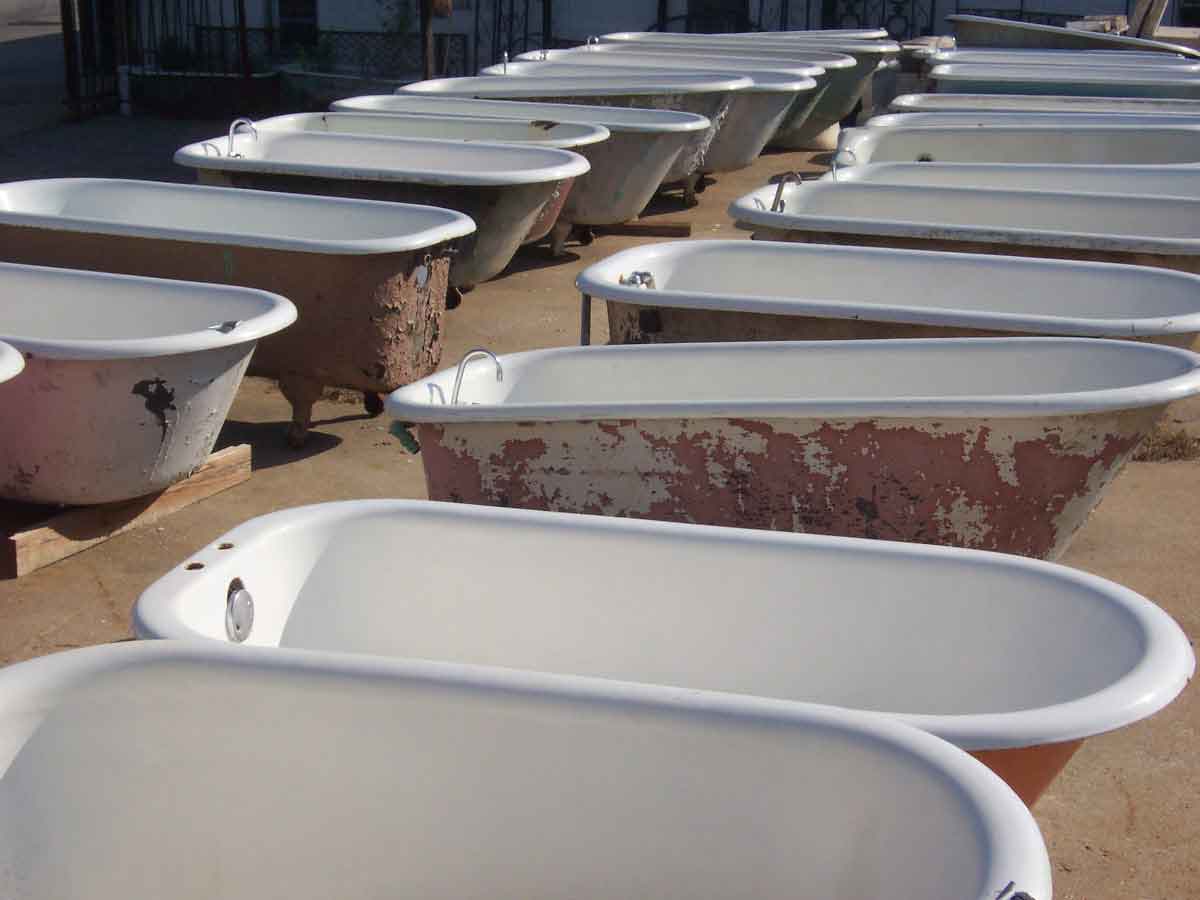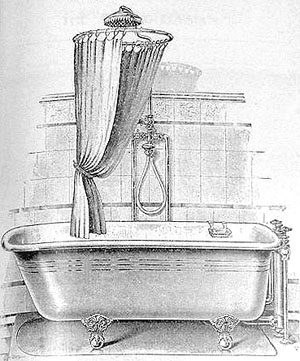I am enamored with my clawfoot tub, which is original to our restored 1911 Craftsman bungalow. It’s is a deep wellspring of contentment. I love soaking, with a glass of red vino, on a chilly winter day. And since I’m sharing, I prefer the water extra hot with an ample sprinkling of lavender-scented Epsom salt to loosen the muscles. But I digress. It’s better to have your clawfoot tub in the bath, rather than in the yard.
I’ve mentioned previously that I am a bit of a hoarder of salvaged house parts because I use them in the renovation biz. And if I fail to buy these things from my charming dumpster diver, Clifford, then they oftentimes return to the dumpster. That’s not good for anyone: not the environment (must take forever to biodegrade), history, or those folks out there that want the charm of a hefty antique footed tub. My rational is that old tubs are rather rare, the cast iron preserves the warmth of the bath water much better than poly-resins, and they preserve that place in time. It’s these concerns for tub rescue that led me to amass an armada of 8 clawfoot tubs in the backyard. Frankly, that’s too many for any one household (and you’d be amazed at how the mosquitoes enjoy raising their young in them.) I spent a good bit of time keeping them emptied and finally (upon my partner’s concerns) put them on Craigslist and sold them all stat. Loading them is good for the muscles as they often weigh in at around 300 lbs.
The clawfoot tub’s ancestry dates to about 3000 years ago when one was unearthed on the island of Crete and it was about 5 feet long (a typical length of a 19th century tub), made of hard pottery and resembling the clawfoot tubs we use today. After the fall of the Roman Empire, bathing was thrown out with the bath water and people used perfume to cover their stench. Nice.
It wasn’t until 1883 that two American companies began enameling cast iron tubs to form a smooth interior surface. Kohler rolled out its first clawfoot ad boasting “horse trough/hog scalder, when furnished with four legs will serve as a bathtub.” It was a versatile vessel indeed. These tubs were mass produced and lauded for their ease of cleaning, both the smooth interior and underneath the feet. And yet, even in 1921, only 1 percent of all homes boasted indoor plumbing. Outhouses were still the norm and folks used their uncoated (likely not Charmin soft) purportedly absorbent Sears catalogs as a popular form of toilet paper.
Today the clawfoot tub is enjoying resurgence for its elegance look and its deep basin. Reproductions abound. However, you’ll save money when you rescue an antique and have it restored and reglazed (about $650).




